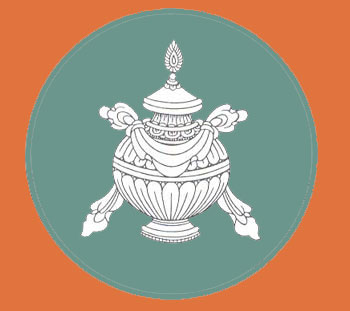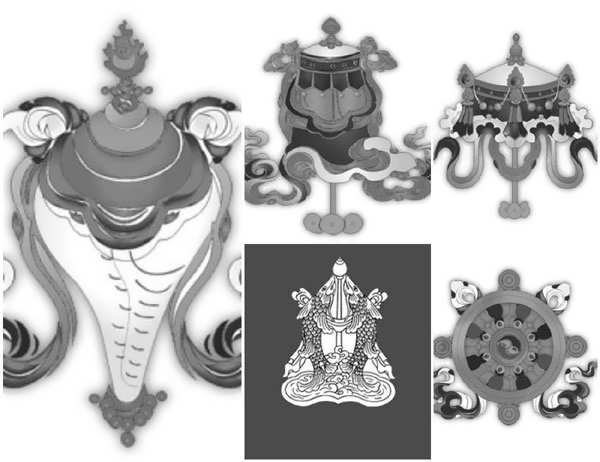Buddhist Tibet places special value on a collection of Eight Auspicious Symbols that underlie Buddhism, Hinduism, and other Dharmic traditions. Traditionally known as Ashtamangala in Sanskrit (Ashta means eight, and Mangala translates as auspicious), these symbols represent the gifts that the Buddha received when he attained enlightenment.
Right-coiled White Conch
The right-coiled white conch symbolizes the deep and spiritual sound of Dharmic teachings. Once heard, it awakens Buddha’s disciples from the deep sleep of ignorance and motivates them to direct their energies to the good of mankind.
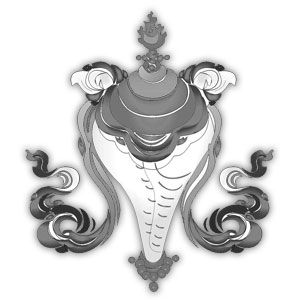
Right-spiralling conches are comparatively rare and are also believed to mirror the motion of the stars and planets across the heavens. Tibetan Buddhists presently use them to summon religious meetings and serve as both a source of music and a container for holy water during certain Tibetan rituals.
Precious Umbrella
The Precious Umbrella, also known as the Precious Parasol, is a traditional Eastern symbol of royalty and protection. It represents safety from illness and other harmful elements and the bounty one can enjoy under its cool shadow. The umbrella’s vertical handle is compared to the central axis that holds up the earth, making the bearer the center and spiritual support of their own private universe. The Buddha is often depicted with a large umbrella hovering over his head.
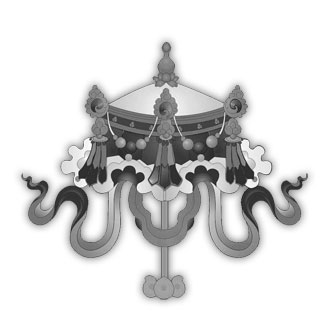
Victory Banner
The Victory Banner is hailed as the symbol of total victory of Tibetan Buddhist thought overall hostile and harmful elements such as ignorance, disharmony, and even death. Variations of this popular symbol can be seen adorning the roofs of Tibetan monasteries.
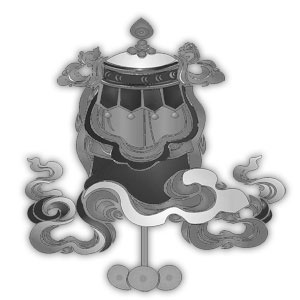
Golden Fish
In Tibetan Buddhism, the sea represents the cycle of samsara or the existence of endless suffering. The Golden Fish symbolizes contentment and absence of fear as it navigates rough oceans without drowning. The fish is traditionally depicted as a carp, which is valued in Asian culture for its shape, size, and long lifespan.
.
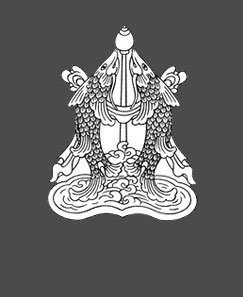
Dharma Wheel
Also known as the Golden Wheel, the Dharma Wheel represents the auspicious way that the sacred wheel of Buddhist doctrine keeps turning. At all times and in all realms of existence, followers experience the constant joy of liberation from attachment and the positive effects of good deeds. The eight spokes symbolize the Noble Eightfold path, one of the earlier Buddha teachings.
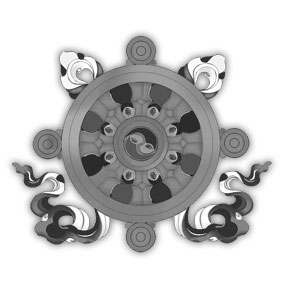
Endless Knot
The Endless, or Auspicious, Knot is a geometric symbol that represents the concept that everything, in reality, is interrelated, with each action reacting. Like Buddha’s wisdom, the knot has neither beginning nor end and ties together the noble qualities of wisdom and compassion.
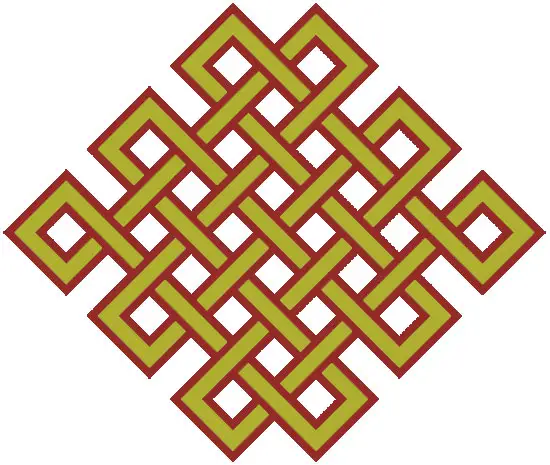
Lotus Flower
The Lotus Flower symbolizes one’s overall thought, speech, and body purification. Although rooted in mud and forced to push up through the water, the flower finally reaches a state of perfumed beauty and perfection. This process signifies the soul’s journey from the murk of materialism through the rough waters of life and into a golden sunshine of pure enlightenment. Together with the Dharma Wheel, the Lotus Flower is one of Tibetan Buddhism’s best-recognized symbols.
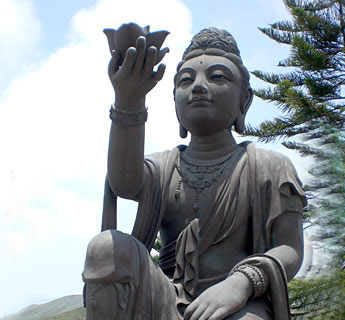
Vase of Treasure
The Vase of Treasure exemplifies the endless riches found in the Buddha’s teachings. No matter how much wisdom and spiritual insights he gave away, his resources were never depleted. In Eastern tradition, vases filled with sacred and valuable items are placed upon altars and other sites where they are believed to attract harmony and riches.
